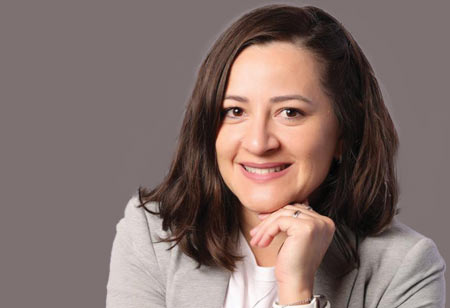Deborah Kluppell serves as the Head of Risk and Insurance at Rumo, one of Brazil’s largest logistics and railway companies, a position she has held since 2023. With a strong reputation in the industry, Deborah is responsible for developing and implementing comprehensive risk strategies, managing complex insurance portfolios, and ensuring the company’s risk exposure is minimized across all operations. She leverages her extensive experience and leadership skills to collaborate with cross-functional teams, support business continuity, and promote a robust culture of risk awareness throughout the organization.
In an exclusive interview with Insurance Business Review she shared her invaluable insights about the latest developments within the sector, the prevailing challenges as well as the possible solutions.
Could you briefly describe your leadership role as Head of Risk and Insurance? What are your key responsibilities and areas of focus?
Being a Risk Manager is quite a challenging and strategic role. My main responsibility is to deeply understand the business—its operations, strengths, weaknesses, and risk appetite—so we can identify, assess, and manage potential exposures effectively.
A key part of my role is to develop and implement risk management policies and insurance strategies that align with the company’s objectives. I also participate and follow key risk indicators, mitigation plans, and ensure that we are prepared to respond to incidents when they occur.
Another important focus is engaging with the C-Level to demonstrate the value of a robust risk management framework and how it contributes to the long-term sustainability and resilience of the business. This includes translating complex risk scenarios into strategic insights that support decision-making at the highest level."
What aspects of insurance adjustment services do you believe are most misunderstood by risk managers and claims teams today?
The insurance adjustment process is often complex and exhausting for everyone involved, mainly due to the volume of documentation and alignment meetings required to clarify all aspects of a claim. Technical teams frequently feel that, even after presenting solid evidence and extensive documentation, the process remains slow and tends to be unfavorable to the insured party.
Transparency and trust must be the foundation of the claims adjustment process. The best outcomes happen when both the insured and the insurer work together toward a fair resolution
One of the most misunderstood aspects is the perception that the insurer is intentionally delaying the process, when in fact, many delays stem from miscommunication, lack of clarity in documentation, or differing interpretations of policy terms.
In this context, the role of the Risk Manager is essential, not only to keep internal teams engaged and aligned throughout the process, but also to act as a bridge between the company and the insurer, ensuring transparency, consistency, and a fair resolution.
Where do you see the biggest gaps between insurers’ expectations and adjusters’ field-level execution in the claims process?
The biggest gap I see between insurers’ expectations and adjusters’ field-level execution is the time it takes to settle a claim. Many events take years to reach a conclusion, which creates frustration and uncertainty for all parties involved.
There’s often a perception that the process is being stretched to its limits before a settlement is reached, something that benefits no one, especially the insured. Over time, the value of money erodes, and the prolonged process forces Risk Managers to repeatedly justify delays to the board, which can lead to mistrust and skepticism.
Bridging this gap requires greater transparency, clearer timelines, and a shared commitment to efficiency from both insurers and adjusters. Risk Managers play a key role in advocating for this alignment and ensuring that the claims process supports, not hinders, the company’s resilience.
What role should insurance adjusters play in dispute resolution, especially when claim values are contested or causality is complex?
Insurance adjusters must have a deep understanding of the complexity and uniqueness of each business, as standard practices may not apply to every case. When claim values are contested or causality is unclear, it’s essential that adjusters go beyond the surface, taking the time to truly understand the insured’s perspective and the specific context of the event.
At the same time, the insured must also be open to understanding the adjuster's point of view. Dispute resolution is most effective when both sides are willing to engage in constructive dialogue, grounded in mutual respect and transparency.
In this process, adjusters should act not only as technical evaluators but also as facilitators, helping bridge gaps in understanding and guiding both parties toward a fair and balanced resolution.
What one piece of advice would you offer to risk leaders navigating complex claims, especially when working with insurance adjusters under pressure, ambiguity, or operational disruption?
Transparency and trust must be the foundation of the claims adjustment process. The best outcomes happen when both the insured and the insurer work together toward a fair resolution. It demonstrates that insurance is a reliable product, especially in moments when the insured needs it most.
In complex claims, where pressure and ambiguity are high, collaboration becomes even more critical. Adjusters and risk leaders should aim to build a partnership based on open communication, mutual respect, and a shared goal of resolving the claim fairly and efficiently.
In Brazil, the insurance culture is still relatively young, but it is evolving rapidly. Strengthening trust in the industry is key, not only for individual claims, but for the credibility and maturity of the entire market.



